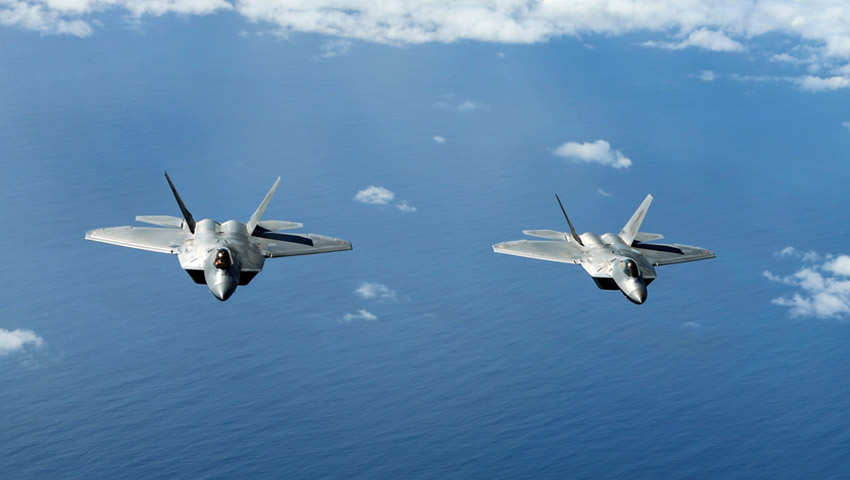The F-22 Raptor is widely regarded as the world’s most lethal air supremacy fighter aircraft. These lethal aircraft made an appearance at Talisman Sabre 2019 and Defence Connect was able to join the US Air Force and its KC-10 Extender and F-22 Raptor pilots during a capability demonstration at Talisman Sabre 2019.
To continue reading the rest of this article, please log in.
Create free account to get unlimited news articles and more!
Fighter aircraft, like every facet of military technology, are rapidly evolving. The current global and regional transition from fourth to fifth-generation fighter aircraft, like the F-22 Raptor and F-35 Joint Strike Fighter platforms, is reshaping the role of fighter fleets and the balance of power in the Indo-Pacific region.
Designed to be the world's premier air superiority platform – and increasingly developed as a result of air-to-surface penetrating strike operations in heavily defended integrated air and missile defence networks in the Middle East – the Lockheed Martin F-22 Raptor represents the pinnacle of air combat system evolution and technological development.
Fifth-generation fighter aircraft represent the pinnacle of modern fighter technology. Incorporating all-aspect stealth even when armed, low-probability-of-intercept radar, high-performance air frames, advanced avionics and highly integrated computer systems, these aircraft provide unrivalled air dominance, situational awareness, networking, interdiction and strike capabilities for commanders.
US Air Force Colonel Brian Baldwin, Group Commander 13th Air Expeditionary Force, who was in Australia to participate in the 2019 Exercise Talisman Sabre, set tongues wagging with statements made to the Australian media regarding allied access to the formidable air dominance platform.
However, shrinking defence budgets in the aftermath of the Cold War, a lack of credible peer adversary to US air superiority and a Congress-implemented export ban despite requests from Japan, Australia and Israel hindered even America's ability to field a credible fleet of these technological marvels – with an original order of 750 units cut to 195, the unit price rose beyond what was sustainable, paving the way for the F-35 Joint Strike Fighter family to fill the role.
"I wish we had more of them. I wish all of our closest friends could have some. We obviously have to take care of where we take the jet so we keep it as a special capability and it’s a pleasure to be able to bring it down to Australia," COL Baldwin is reported saying at RAAF Base Amberley in south-east Queensland.
The McDonnell Douglas KC-10 Extender is an aerial refuelling tanker aircraft operated by the USAF. A military version of the three-engined DC-10 airliner, the KC-10 was developed from the Advanced Tanker Cargo Aircraft Program.
A total of 60 KC-10s were produced for the USAF. The Royal Netherlands Air Force operates two similar tankers designated KDC-10, which were converted from DC-10s.
The KC-10 plays a key role in the mobilisation of US military assets, taking part in overseas operations far from home.
These aircraft performed airlift and aerial refuelling during the 1986 bombing of Libya (Operation Eldorado Canyon), the 1990-91 Gulf War with Iraq (Operations Desert Shield and Desert Storm), the NATO bombing of Yugoslavia (Operation Allied Force), War in Afghanistan (Operation Enduring Freedom), and Iraq War (Operations Iraqi Freedom and New Dawn).
The KC-10 is expected to serve until 2043.
Stephen Kuper
Steve has an extensive career across government, defence industry and advocacy, having previously worked for cabinet ministers at both Federal and State levels.

 Login
Login





















